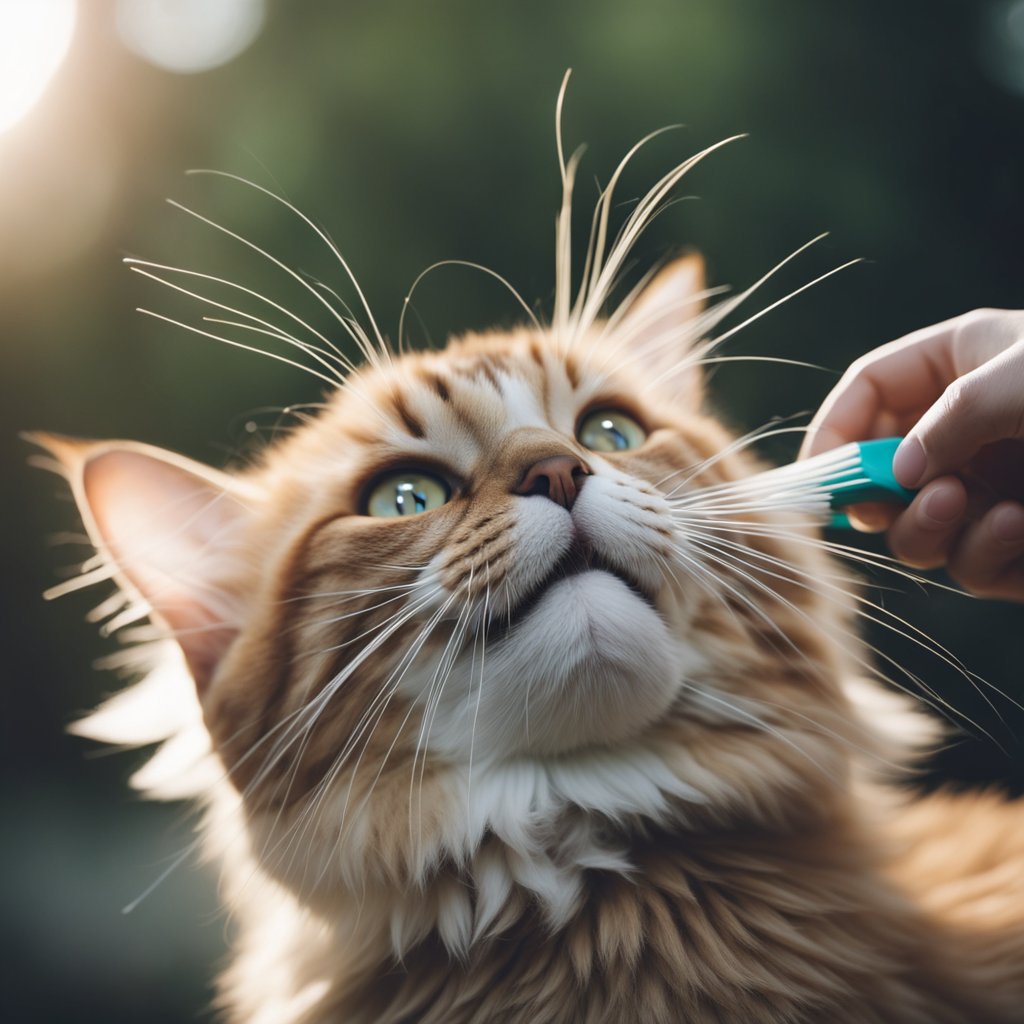How to Remove Mats from a Long Haired Cat: Expert Tips and Tricks
Long-haired cats are beautiful and majestic creatures, but they require extra care and attention when it comes to grooming. One of the most common issues that long-haired cat owners face is mats in their cat’s fur. Mats are clumps of tangled hair that can be painful for your cat and lead to skin irritation and infection if left untreated. In this article, you will learn how to remove mats from your long-haired cat and keep their coat healthy and beautiful.
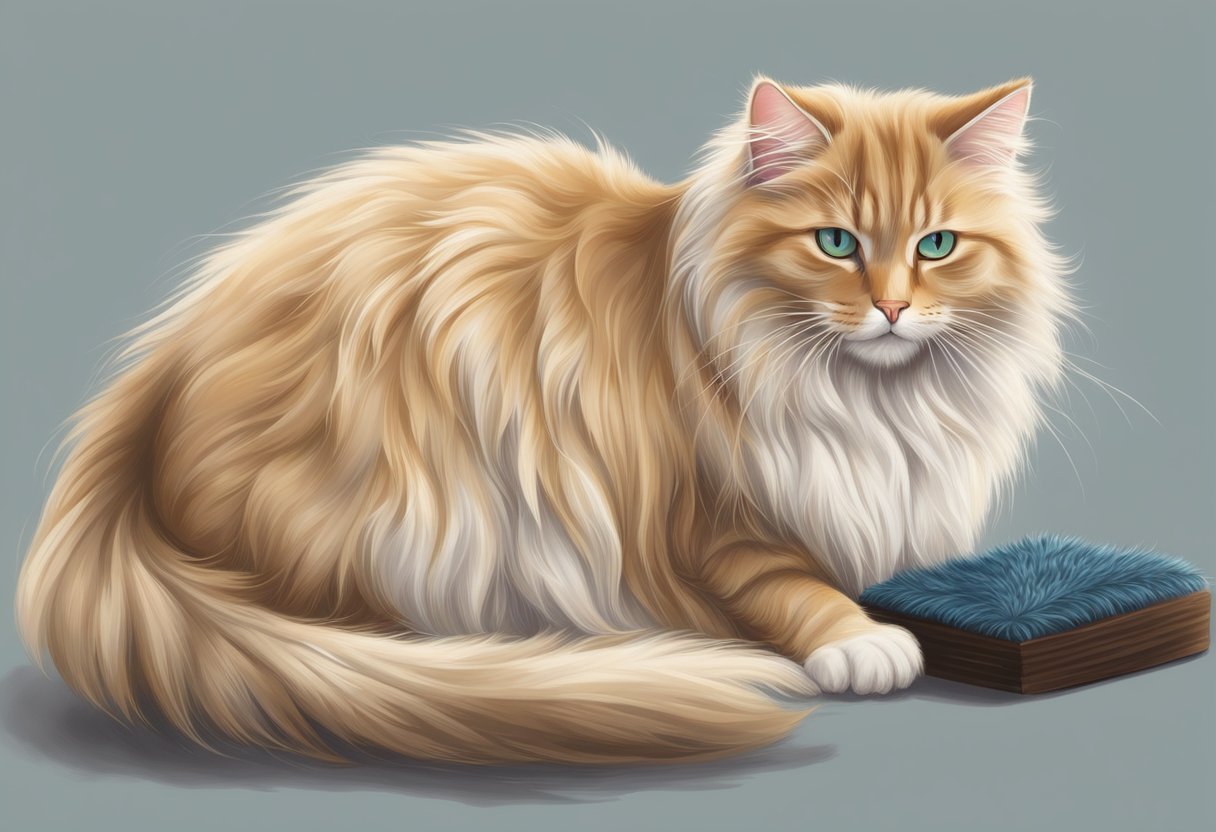
Understanding Mats in Long-Haired Cats Mats are more common in long-haired cats because their fur is more prone to tangling and knotting. Mats can form anywhere on your cat’s body, but they are most common in areas where there is friction, such as behind the ears, under the legs, and around the tail. Mats can also form if your cat is not groomed regularly or if they have a medical condition that affects their coat, such as allergies or skin infections.
Removing Mats from Your Cat Removing mats from your cat’s fur can be a delicate process, and it’s important to be patient and gentle. One method is to use a detangling spray or conditioner to soften the mat and make it easier to comb out. Another method is to use a pair of scissors or clippers to carefully cut the mat out, but this should only be done if you are experienced and confident in your grooming skills. It’s important to note that pulling or tugging on the mat can be painful for your cat and may cause them to become agitated or aggressive.
Key Takeaways
- Mats are clumps of tangled hair that can be painful for your cat and lead to skin irritation and infection if left untreated.
- Mats are more common in long-haired cats and can form anywhere on your cat’s body.
- Removing mats from your cat’s fur can be done using a detangling spray or conditioner, but it’s important to be patient and gentle.
Understanding Mats in Long-Haired Cats
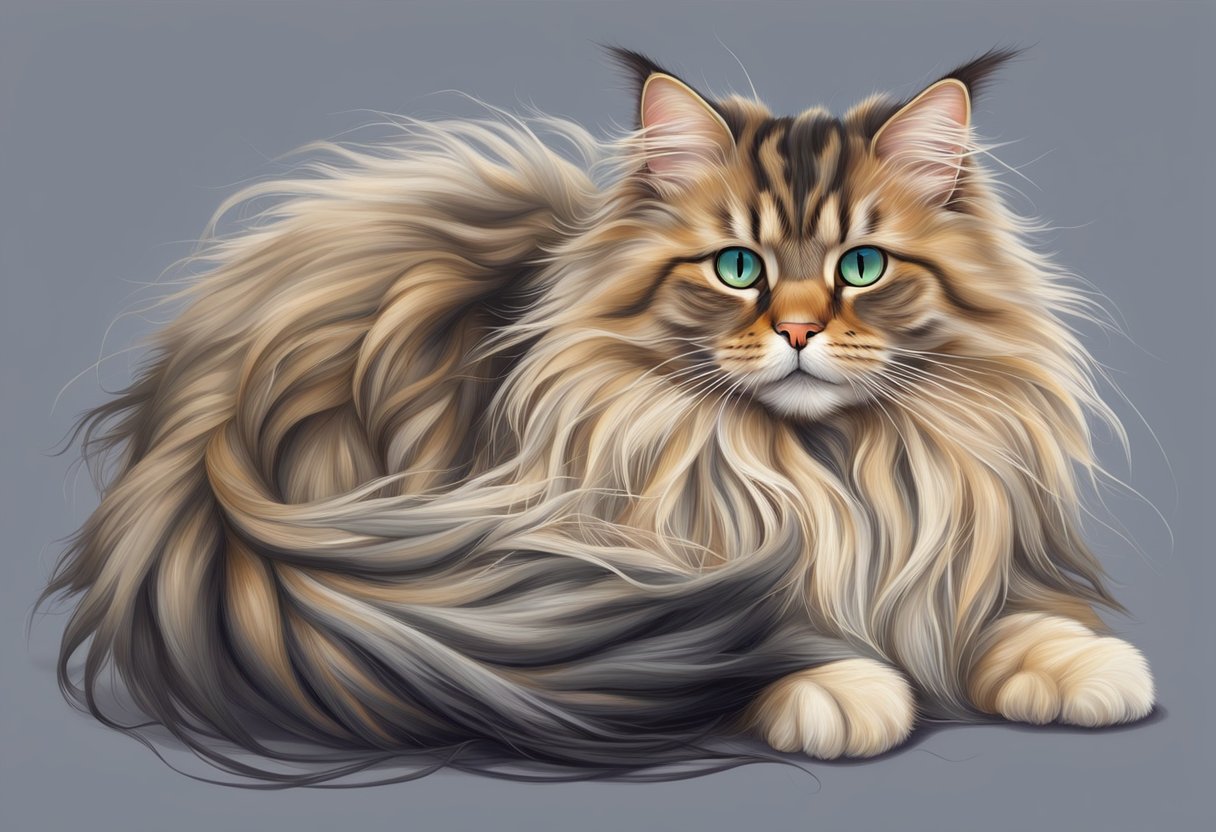
If you own a long-haired cat, you know how beautiful and majestic they can be. However, with all that fur comes the risk of matting, which can be uncomfortable and even painful for your feline friend. In this section, we will explore the causes and types of mats that can occur in long-haired cats.
Causes of Matting
Mats can form in long-haired cats for a variety of reasons. One of the most common causes is lack of grooming. If your cat is not brushed regularly, their fur can become tangled and matted. This is especially true for cats that are overweight or have mobility issues, as they may have difficulty reaching certain areas of their body to groom themselves.
Another cause of matting is moisture. If your cat gets wet and is not dried off properly, their fur can become matted. This is why it’s important to dry your cat thoroughly if they get caught in the rain or have a bath.
Finally, mats can also form due to underlying health issues. For example, cats with arthritis or other mobility issues may have trouble grooming themselves, leading to matting. Additionally, cats with skin conditions or parasites may be more prone to matting.
Types of Mats
There are several types of mats that can occur in long-haired cats. The most common type is surface mats, which occur when the top layer of fur becomes tangled and matted. These mats are usually easy to remove with a comb or brush.
Another type of mat is a pelt, which occurs when the fur becomes so matted that it forms a solid mass. Pelts are more difficult to remove and may require the use of scissors or clippers.
Finally, there are also mats that occur close to the skin, which can be painful for your cat. These mats may require the attention of a professional groomer or veterinarian to remove safely.
By understanding the causes and types of mats that can occur in long-haired cats, you can take steps to prevent and treat matting in your furry friend. Regular grooming and proper drying after baths or exposure to water can go a long way in preventing mats from forming.
Removing Mats from Your Cat
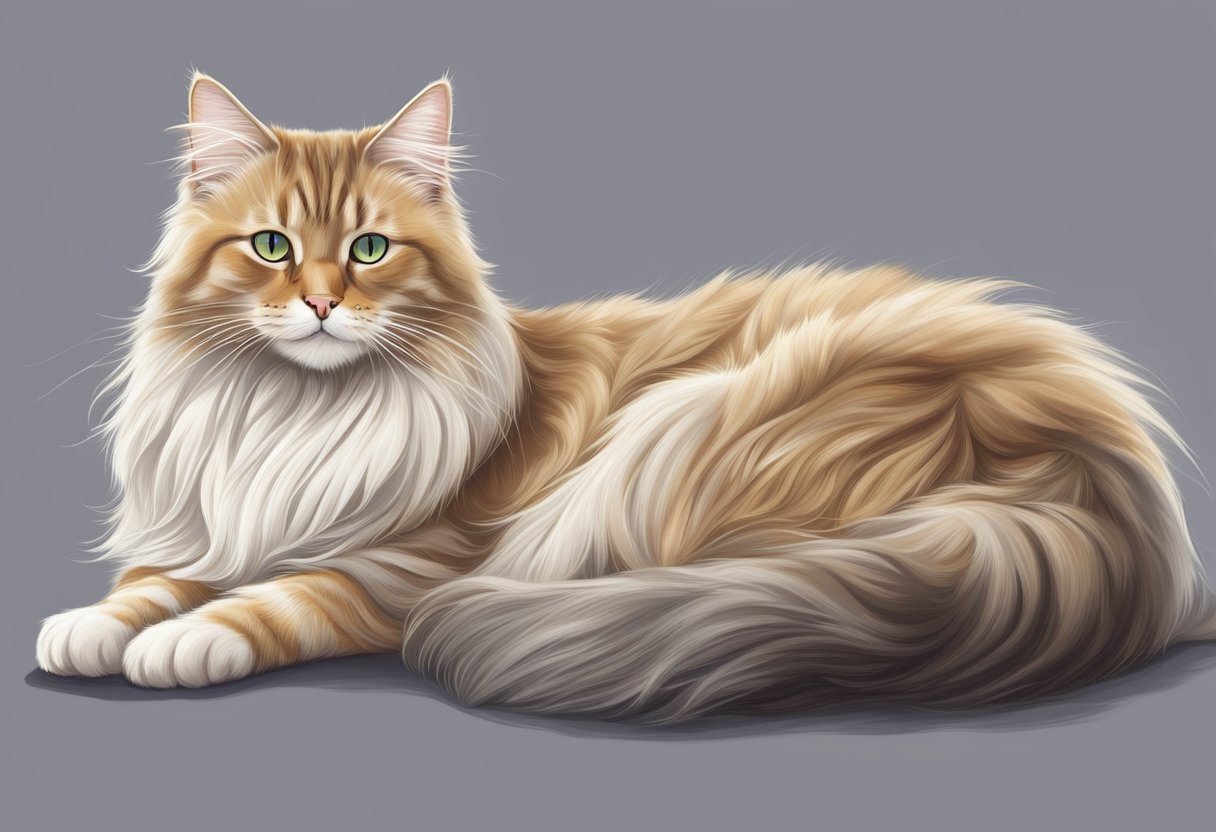
If you have a long-haired cat, you know how challenging it can be to keep their fur free of mats. Mats can cause discomfort, pain, and even skin infections if left untreated. In this section, we will discuss how to remove mats from your cat, step-by-step.
Preparation for Mat Removal
Before you start the mat removal process, it’s essential to prepare your cat. Make sure your cat is relaxed and comfortable by giving them treats, petting, and talking to them in a soothing voice. It’s also essential to have someone to help you hold your cat still, especially if your cat is uncooperative.
Tools for Mat Removal
To remove mats from your cat, you’ll need the following tools:
- Mat comb: A mat comb is a specialized comb designed to remove mats from your cat’s fur. It has sharp blades that cut through the mat without pulling your cat’s hair.
- Scissors: Use scissors to cut away small mats or to trim the edges of larger mats.
- Detangling spray: A detangling spray can help loosen the mat and make it easier to remove.
Step-by-Step Mat Removal Process
Here is a step-by-step process for removing mats from your cat:
- Start by using your fingers to gently pull apart the mat. Be careful not to pull too hard, as this can cause pain and discomfort to your cat.
- If the mat is too tight, use a mat comb to cut through the mat. Hold the mat comb parallel to your cat’s skin and gently slide it under the mat. Use your fingers to hold the mat away from your cat’s skin as you guide the mat comb through the mat.
- If the mat is too large, use scissors to cut away the edges of the mat. Be careful not to cut your cat’s skin.
- Once you’ve removed the mat, use a brush or comb to detangle any remaining fur.
- Check your cat’s skin for any signs of irritation, redness, or sores. If you notice any signs of infection, take your cat to the vet.
Aftercare and Prevention
After removing mats from your cat, it’s important to take care of their fur to prevent mats from forming again. Here are some tips:
- Brush your cat regularly: Brushing your cat’s fur regularly can prevent mats from forming. Use a metal comb or a slicker brush to remove tangles and keep their fur smooth.
- Use a detangling spray: Use a detangling spray before brushing your cat’s fur to make it easier to remove tangles.
- Trim your cat’s fur: If your cat has long hair, consider trimming their fur to prevent mats from forming.
- Bathe your cat: Regular bathing can keep your cat’s fur clean and prevent mats from forming.
By following these tips and using the right tools, you can remove mats from your cat’s fur safely and effectively. Remember to be patient and gentle with your cat, and always seek professional help if you’re unsure about how to remove a mat.
Resources

When it comes to removing mats from a long-haired cat, there are several resources available to help you. Here are a few that we recommend:
1. Videos
Watching videos can be a great way to learn how to remove mats from a long-haired cat. Some popular YouTube channels that cover this topic include Kitten Lady, Hannah Shaw, and Jackson Galaxy. These channels offer step-by-step instructions and demonstrations on how to remove mats from your cat’s fur.
2. Grooming Tools
Having the right grooming tools can make the process of removing mats much easier. Some tools that you may find helpful include a metal comb, a slicker brush, and a dematting tool. You can find these tools at your local pet store or online. Just make sure to choose tools that are appropriate for your cat’s fur type and length.
3. Professional Groomers
If you’re having trouble removing mats from your cat’s fur, or if your cat has a particularly severe matting problem, you may want to consider taking them to a professional groomer. Professional groomers have the experience and tools necessary to safely and effectively remove mats from your cat’s fur. Just make sure to choose a groomer who is experienced with long-haired cats and who uses humane grooming practices.
By utilizing these resources, you can learn how to safely and effectively remove mats from your long-haired cat’s fur. Remember to always be patient and gentle, and to seek professional help if necessary.
Conclusion
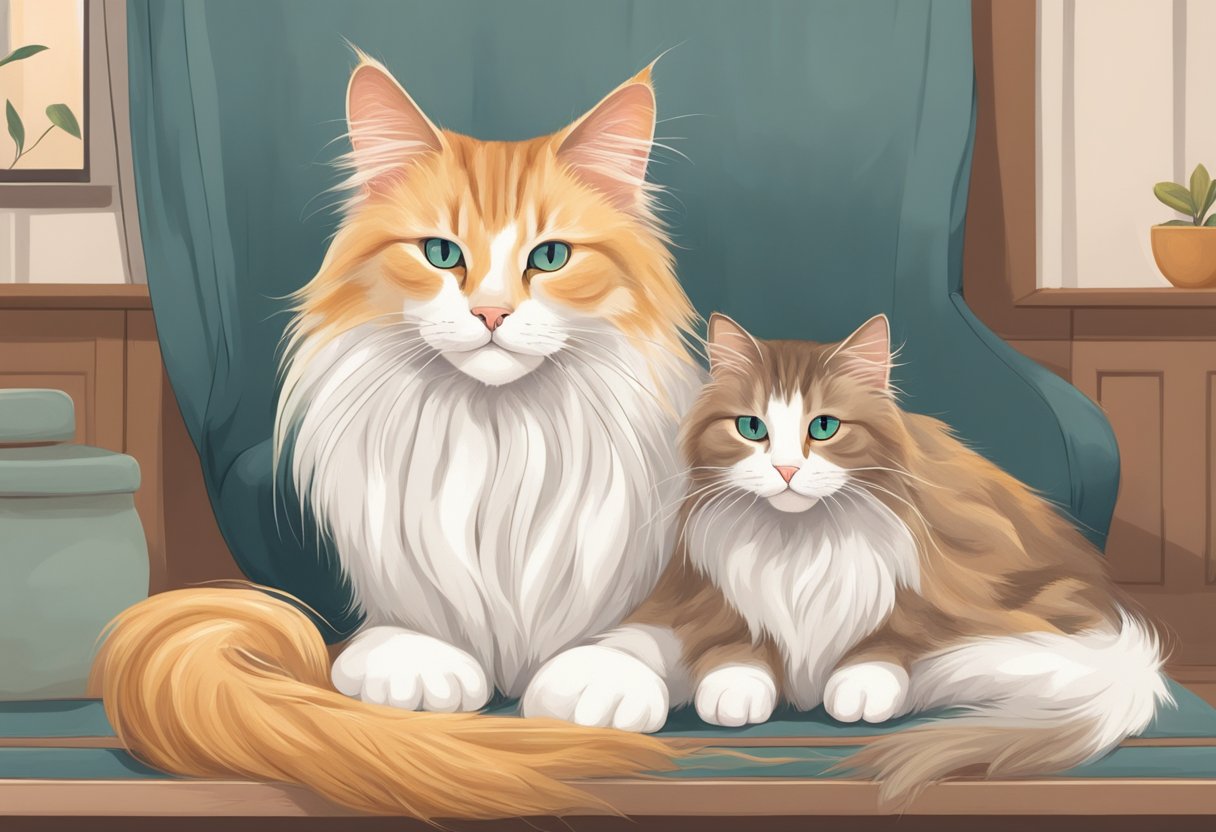
In conclusion, removing mats from a long-haired cat can be a challenging task, but it is necessary for the overall health and well-being of your feline friend. By following the steps outlined in this article, you can safely and effectively remove mats from your cat’s fur without causing any discomfort or pain.
Remember to always use the proper tools, such as a metal comb or mat comb, and to be gentle when working through the mats. It is also important to address mats as soon as you notice them, as they can quickly become more difficult to remove the longer they are left untreated.
In addition to regular grooming, you can help prevent mats from forming by providing your cat with a healthy and balanced diet, as well as plenty of opportunities for exercise and play. By taking good care of your cat’s fur and overall health, you can ensure that they stay happy and healthy for years to come.
Frequently Asked Questions
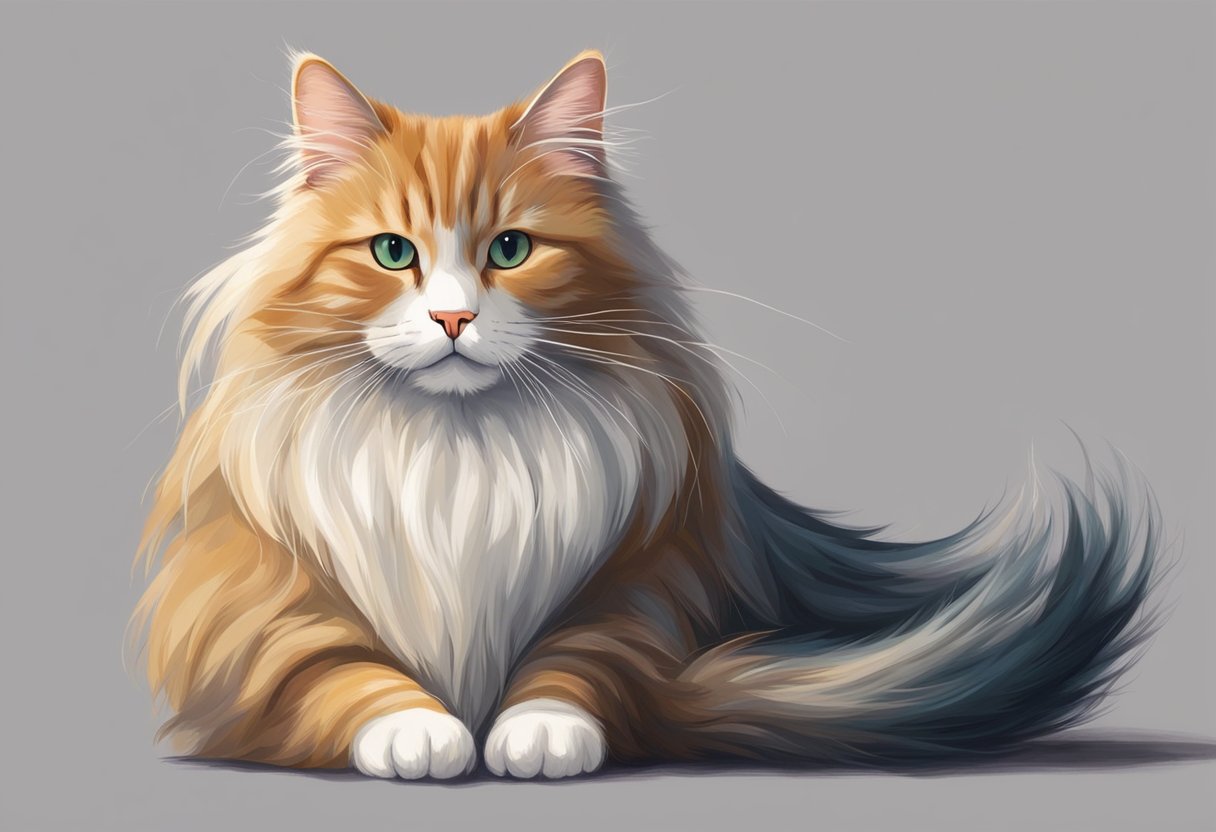
What is the safest way to cut out matted fur from a cat?
Cutting out matted fur from your cat can be tricky and potentially dangerous. It’s best to use scissors with rounded tips to avoid accidentally injuring your cat’s skin. Start by cutting small sections of the mat and work your way towards the base of the fur. Be cautious and take your time to avoid cutting your cat’s skin.
Can I use detangling sprays or creams to remove mats in my cat’s fur?
Detangling sprays or creams can be useful in removing mats from your cat’s fur. However, it’s important to choose a product that is safe for cats and to follow the instructions carefully. Avoid using human hair products, as they may contain ingredients that can be harmful to your cat.
What are the best tools to use for dematting a long-haired cat?
The best tools for dematting a long-haired cat are a metal comb and a slicker brush. Use the comb to gently work through the mat, starting at the edges and working your way towards the base. The slicker brush can help to remove any remaining tangles and smooth out the fur.
How can I prevent mats from forming in my cat’s fur?
Regular grooming is the key to preventing mats from forming in your cat’s fur. Brush your cat’s fur daily, paying special attention to areas that are prone to matting, such as behind the ears and under the legs. If your cat has long hair, consider having it trimmed regularly to prevent mats from forming.
Is it safe to use olive oil to help remove mats from my cat’s fur?
While olive oil can help to loosen mats in your cat’s fur, it’s not recommended. Olive oil can be difficult to wash out and may leave your cat’s fur greasy and attract dirt and debris. It’s best to use a detangling spray or cream specifically designed for cats.
What steps should I take to remove severe matting from my cat’s coat at home?
Severe matting should be addressed by a professional groomer or veterinarian. Attempting to remove severe matting at home can be painful for your cat and may cause injury. If you notice severe matting in your cat’s fur, make an appointment with your veterinarian or a professional groomer as soon as possible.
